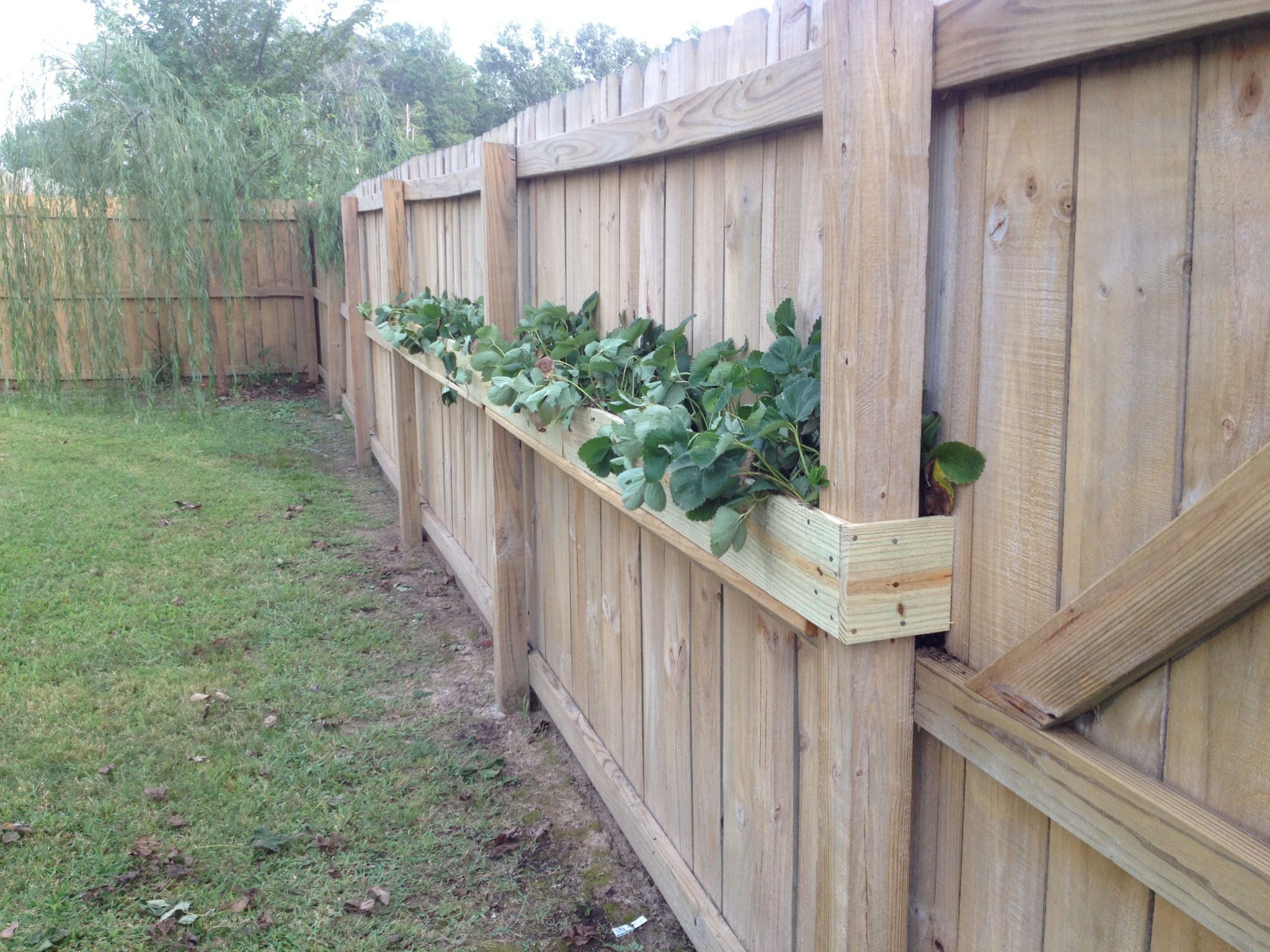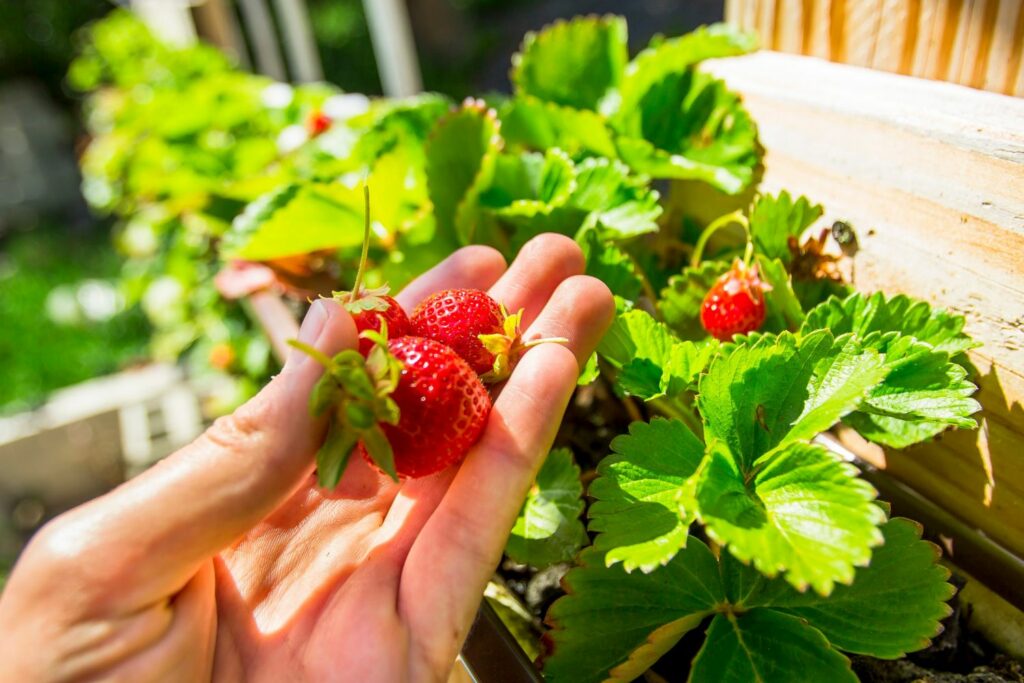Growing juicy, homegrown strawberries is a dream for many gardeners, but lack of space can make it challenging. Strawberries spread rapidly and take up considerable ground space. For urban gardeners and anyone with limited yard area, going vertical with strawberry planting solves these problems beautifully.
Training strawberry vines up fences trellises or other structures allows you to reap bountiful berry harvests even in the smallest gardens. After successfully experimenting with vertical strawberry gardening, I’m excited to share everything I’ve learned! Read on for a complete guide to this fun, productive growing method.
Why Go Vertical?
Strawberry plants grow best when allowed to sprawl out horizontally across the soil. But for small space gardeners, letting them run rampant simply isn’t practical. Here are some excellent reasons to grow your berries vertically instead:
-
Saves precious ground space. Training vines upward frees beds and borders for other edibles
-
Improves airflow and reduces disease. Lifting berries off the ground prevents mold and rot.
-
Makes picking easier Bringing fruits to reachable heights minimizes bending and kneeling!
-
Maximizes light exposure from all angles, boosting fruit yields.
With advantages like these, vertical gardening is an obvious choice for any strawberry lover short on square footage.
Selecting the Best Strawberry Varieties
For vertically grown strawberries, trailing types with long, dangling runners work best. Look for varieties described as vigorous, spreading, or hanging basket suitable. Excellent vertical strawberry varieties include:
-
Chandler – Extremely vigorous with loads of large, sweet berries perfect for training up.
-
Seascape – Super disease resistant and adaptable to vertical growing. Produces high yields.
-
Albion – Impressive jumbo berry size on heavily productive, trailing vines ideal for heights and containers.
-
White Carolina – Uniquely white-fleshed berries that look stunning cascading from vertical supports.
Setting Up Supports for Vertical Growth
Once you’ve chosen plants, the next step is installing proper supports. The best vertical structures for strawberries include:
-
Trellises or obelisks – Compact standalone supports maximize limited space when placed in beds or borders.
-
Walls and fences – These permanent vertical planes offer ample support area. Prioritize south or west-facing exposures.
-
Railings, posts, poles – Single upright supports also work well. Just be sure to install netting or wires for vines to cling to.
Whatever option you choose, ensure your support structure is firmly anchored, able to bear the weight of dozens of ripening berry bunches. Wood, metal, and plastic lattices all work fine as long as they are sturdy and stable.
Prepping Plants for Planting
Before putting vines in place, take a little time to prep young strawberry plants for transplant:
-
Trim any long roots back to about 6 inches to encourage branching and establishment.
-
Inspect root systems and plant only healthy, vigorous looking specimens.
-
Soak bare root plants in water for 30 minutes before planting to rehydrate.
-
Consider dipping roots in transplant solution to reduce shock.
-
Keep plants shaded and protected from sun/wind until planting time.
Proper prep sets your vertically grown strawberries up for success!
Planting Your Vertical Strawberries
Now for the fun part! Follow these steps to get your vertical berries in place:
-
For fences/walls, set plants into pockets or shelves of high quality potting mix. Commercial wall garden planters also work wonderfully.
-
Space plants 10-12 inches apart vertically and horizontally so vines don’t overcrowd.
-
Plant at top of supports and train runners downward, or start at bottom and weave vines upward. Either approach works!
-
Plant crowns just above soil level – too deep invites rot and disease. Shallow is best.
-
Water newly planted vines well and mist often at first to reduce transplant stress.
-
Apply mulch around plants to maintain even soil moisture and cool roots.
With proper planting care, your berries will flourish in their vertical positions.
Caring for Growing Strawberry Vines
Established vertical strawberry plants need attentive care for maximum fruit production:
-
Monitor soil moisture frequently, watering when top few inches become dry. Take care not to oversaturate.
-
Fertilize monthly with a balanced fruiting formula to support heavy berry loads.
-
Remove flowers the first year so plants focus energy on root and vine growth. Also prune away excess runners.
-
Gently weave and tie vines onto supports. Be patient – it takes time for trailing habits to develop.
-
Pick ripe fruits often to keep plants in production. Maintain 2-3 day harvest intervals at peak ripening.
-
Watch for pests like mites, aphids, or slugs. Take control measures at first signs of infestation.
With proper care, vertically trained strawberries will thrive season after season.
Harvesting Heavenly Homegrown Berries
Of course, the best part of growing strawberries vertically comes when it’s time to reap your bounty!
-
Check plants daily once flowers emerge. Harvest ripe fruits every 2-3 days during peak season.
-
Gently twist berries off rather than pulling to avoid damaging plants.
-
For longest shelf life, leave caps on freshly picked berries.
-
Pick in the cool of morning when flavor and juice content are highest.
-
Place a frame or cloth underneath plants to catch any dropped fruits. Enjoy ASAP!
Growing strawberries vertically makes fresh snacking a literal pick!
Troubleshooting Common Vertical Strawberry Problems
While vertical gardening works wonderfully for strawberries, a few potential issues can arise:
-
Weak vines – Purchase the healthiest plants with top notch genetics to avoid slow establishment.
-
Sparse flowers – Too much nitrogen fertilizer inhibits fruiting. Ease off high nitrogen and increase phosphorus/potassium ratios.
-
Small berries – Overcrowded plants compete for resources, reducing berry size. Allow at least 8-10 inches between vines.
-
Wilting – Usually signals overwatering. Allow soil to dry out further between irrigations.
-
Pest issues – Take preventative measures and treat at first signs. Clean up fallen berries promptly to prevent spread.
With preventative practices and early intervention, your vertically grown berries will flourish!
Enjoying the Fruits of Vertical Gardening
I hope these tips have inspired you to try taking strawberry gardening to new heights! With the right varieties and care, fences, rails, and poles can transform into surprisingly prolific berry patches.
Homegrown strawberries are special enough, but vertical garden fruits somehow taste even sweeter. I’d love to hear if you try training strawberries or other vining crops skyward. Share your own vertical gardening stories and tips!

Directions For Planting Strawberries In A Gutter
Follow these simple steps for preparing the gutter for strawberry plants.
You want to know who’s behind Plantura?


As a horticulture student I mainly studied crops and cultivation techniques. It fascinates me how many diverse plants can grow from small, nearly identical seeds. Favourite fruit: blueberries, grapes, raspberries, pears Favourite vegetables: mushrooms, peppers, kohlrabi, onions, garlic
As not everyone has a large garden or balcony, growing strawberries vertically is an excellent option for those of us with limited space. Here are some useful tips and tricks.

Nothing beats the sweet taste of home-grown strawberries (Fragaria) in summer. Unfortunately, strawberry plots take up a lot of space, making it seem impossible to plant strawberries in a small garden or on a balcony. However, there is a trick to growing a large number of strawberry plants in a small space – simply stack them on top of each other. This brilliant concept is also known as vertical gardening, in which plants are grown upwards rather than outwards. What may sound complicated at first is actually a very quick and easy way to save space. On top of that, vertical gardens are real showstoppers!
How to grow Strawberries in Gutters
FAQ
Will strawberries grow up a fence?
A trellis, tower or even a garden fence is a suitable climbing aid. Make sure it is about 1.5 m tall. In pots, a spiral plant support is a good choice as it does not require much space and can simply be stuck into the soil. Tip: when there are large amounts of fruit, the runners quickly become very heavy.
Where not to plant strawberries?
Bad Neighbors for Strawberries
Common vegetable crops — including tomatoes, potatoes, peppers, eggplants, melons and plants in the rose family — can introduce the fungi responsible for Verticillium wilt. Potatoes, tomatoes, eggplant and red clover can harbor species of nematodes that can feed on strawberries.
What month is the best month to plant strawberries?
Spring Planting: – In most regions, the best time to plant strawberries is in early spring, after the last frost. This is typically between late March and early April, depending on your location. Fall Planting: – In warmer climates, strawberries can also be planted in the fall, around September to October.
Is it better to grow strawberries vertically or horizontally?
Can you grow strawberries in a vertical garden? The answer is yes! Strawberries are one of the easiest fruits to grow, and they thrive in a vertical garden. This type of garden is perfect for small spaces and for those who want to grow their own food but don’t have a lot of room.
How do you grow strawberries in gutters?
Successfully growing strawberries in gutters involves adhering to several important practices. These practices ensure healthy plant growth and optimal fruit production. Effective watering is critical in gutter strawberry cultivation. The key is to maintain consistent moisture without overwatering.
How do you grow strawberry plants in a vertical garden?
Winter: Choose cold-hardy crops or use your vertical space to grow cool-season greens. Spring: Prepare for warm-season crops by starting seeds indoors or readying spaces for new strawberry plants. Summer: Maintain your strawberry plants and consider adding heat-loving herbs or flowers to your vertical garden.
How much space do you need to plant strawberries?
Plant strawberry seedlings at intervals of 6 to 8 inches to give them ample space to grow. This spacing is crucial for air circulation and sunlight penetration, both vital for healthy plant development. After planting, water the seedlings gently to settle the soil around the roots. What Are the Key Dos of Growing Strawberries in Gutters?
How do I protect my strawberry plants from rain?
The soil can harbor pathogenic fungi and other creepy-crawlies that can infect or infest your strawberry planting. So, keeping strawberries off the dirt is important. Additionally, rain can splash muddy soil up onto strawberries and contaminate them that way. Using gutter systems minimizes this risk. 2. Make strawberry picking easier
How do you plant a strawberry plant in a container?
When planting, use a high-quality potting mix suitable for container gardening. Plant strawberry seedlings at intervals of 6 to 8 inches to give them ample space to grow. This spacing is crucial for air circulation and sunlight penetration, both vital for healthy plant development.
Can you grow white strawberries in a vertical garden?
As well as regular strawberries, you can also use these vertical garden systems to grow white strawberries, also known as pineberries. They have similar growing requirements as red strawberries but they produce small white berries with red seeds.
